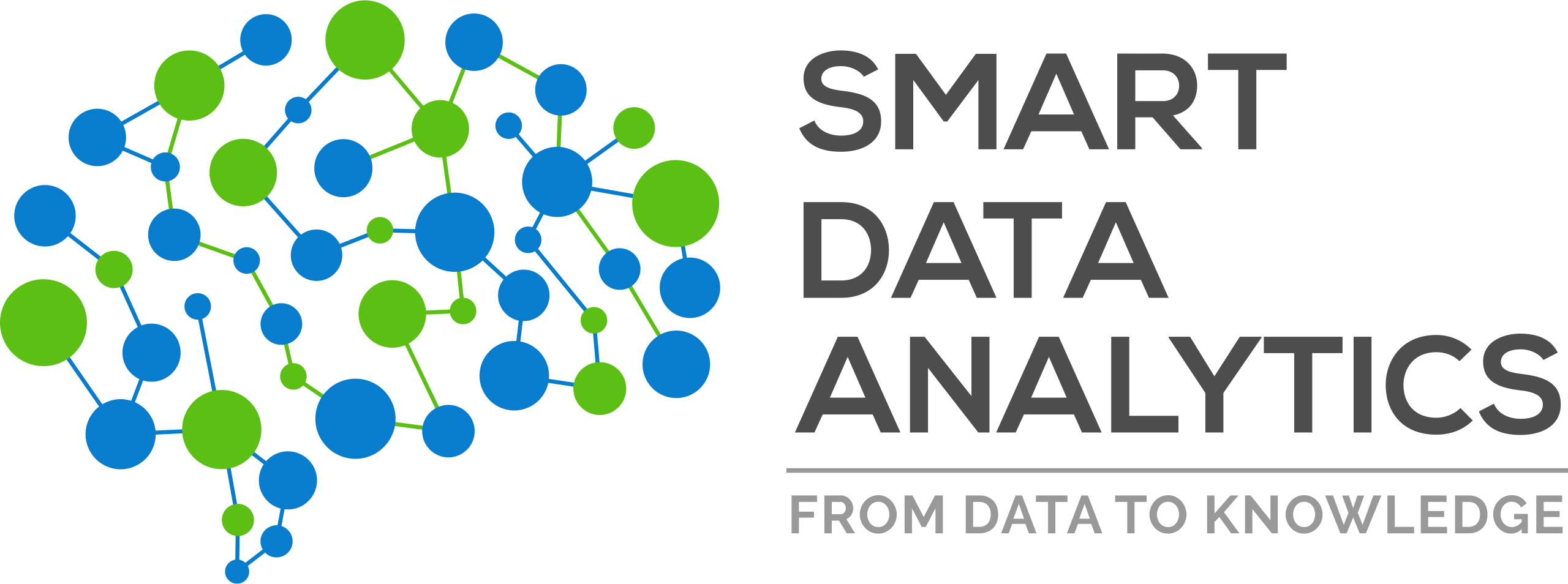We are very pleased to announce that our group got three papers accepted for presentation at EMNLP21. Empirical Methods in Natural Language Processing (EMNLP) is a leading conference in the area of natural language processing and artificial intelligence. Along with the Association for Computational Linguistics (ACL), it is one of the two primary high impact conferences for natural language processing research.
Here are the abstracts and the link to the paper:
-
Time-aware Graph Neural Networks for Entity Alignment between Temporal Knowledge Graphs
By Chengjin Xu, Fenglong Su, and Jens Lehmann.Abstract
Entity alignment aims to identify equivalent entity pairs between different knowledge graphs (KGs). Recently, the availability of temporal KGs (TKGs) that contain time information created the need for reasoning over time in such TKGs. Existing embedding- based entity alignment approaches disregard time information that commonly exists in many large-scale KGs, leaving much room for improvement. The figure illustrates the limitation of the existing time-agnostic embedding-based entity align approaches. Given two entities, George H. W. Bush and George Walker Bush, existing in two TKGs respectively, time-agnostic embedding-based approaches are likely to ignore time information and wrongly recognize these two entities as the same person in the real world due to the homogeneity of their neighborhood information. In this paper, we focus on the task of aligning entity pairs between TKGs and propose a novel Time-aware Entity Alignment approach based on Graph Neural Networks (TEA-GNN). We embed entities, relations and timestamps of different KGs into a vector space and use GNNs to learn entity representations. To incorporate both relation and time information into the GNN structure of our model, we use a time-aware attention mechanism which assigns different weights to different nodes with orthogonal transformation matrices computed from embeddings of the relevant relations and timestamps in a neighborhood. Experimental results on multiple real-world TKG datasets show that our method significantly outperforms the state-of-the-art methods due to the inclusion of time information. Our datasets and source code are available at https://github.com/soledad921/TEA-GNN -
Knowledge Graph Representation Learning using Ordinary Differential Equations
By Mojtaba Nayyeri, Chengjin Xu, Franca Hoffmann, Mirza Mohtashim Alam, Jens Lehmann, and Sahar Vahdati.Abstract
Knowledge Graph Embeddings (KGEs) have shown promising performance on link prediction tasks by mapping the entities and relations from a knowledge graph into a geometric space. The capability of KGEs in preserving graph characteristics including structural aspects and semantics, highly depends on the design of their score function, as well as the inherited abilities from the underlying geometry. Many KGEs use the Euclidean geometry which renders them incapable of preserving complex structures and consequently causes wrong inferences by the models. To address this problem, we propose a neuro differential KGE that embeds nodes of a KG on the trajectories of Ordinary Differential Equations (ODEs). To this end, we represent each relation (edge) in a KG as a vector field on several manifolds. We specifically parameterize ODEs by a neural network to represent complex manifolds and complex vector fields on the manifolds. Therefore, the underlying embedding space is capable of assuming the shape of various geometric forms to encode heterogeneous subgraphs. Experiments on synthetic and benchmark datasets using state-of-the-art KGE models justify the ODE trajectories as a means to enable structure preservation and consequently avoiding wrong inferences. -
Proxy Indicators for the Quality of Open-domain Dialogues
By Rostislav Nedelchev, Jens Lehmann, and Ricardo Usbeck.Abstract
The automatic evaluation of open-domain dialogues remains a largely unsolved challenge. Despite the abundance of work done in the field, human judges have to evaluate dialogues’ quality. As a consequence, performing such evaluations at scale is usually expensive. This work investigates using a deep-learning model trained on the General Language Understanding Evaluation (GLUE) benchmark to serve as a quality indication of open-domain dialogues. The aim is to use the various GLUE tasks as different perspectives on judging the quality of conversation, thus reducing the need for additional training data or responses that serve as quality references. Due to this nature, the method can infer various quality metrics and can derive a component-based overall score. We achieve statistically significant correlation coefficients of up to 0.7.

